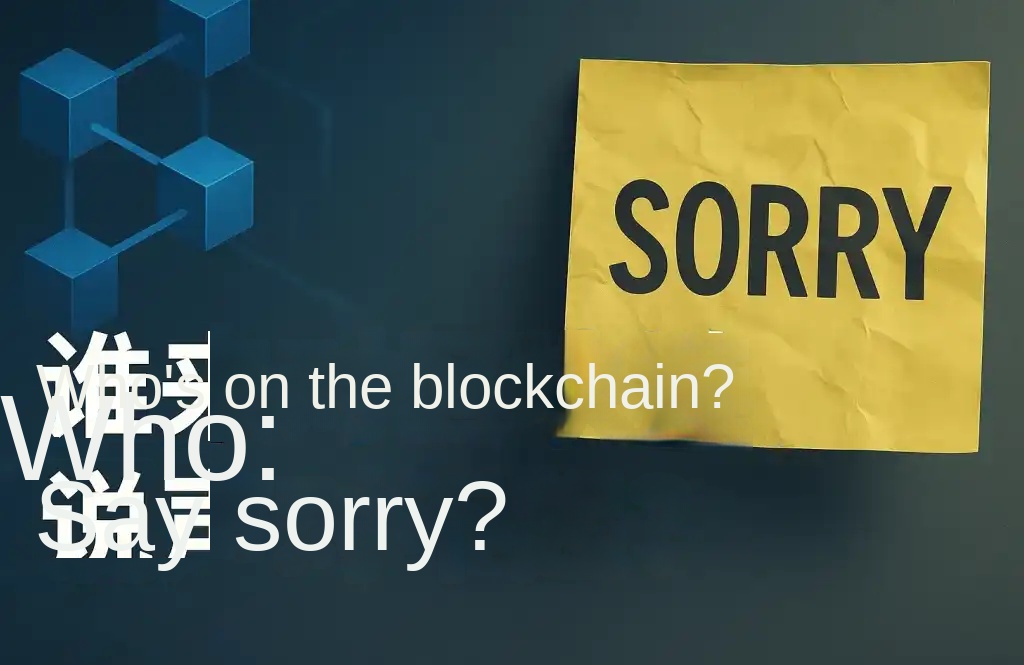Bankless: What's the next phase in cryptocurrency airdrops?
Nathan Snell is co-founder and CEO of Raleon
Original source: Bankless
The DeFi way
Everyone loves an Airdrop, after all, who doesn't love a free gift? But from the perspective of the project, the correct allocation of tokens can determine the success or failure of a community.
The next phase of cryptocurrency airdrops
Airdrops are a native Web3 marketing strategy. When done right, they can help drive new user growth, retention, and TVL.
With this in mind, we spent time looking at past airdrops such as UNI, HOP, ENS, 1INCH, Mooncats, and Optimism to determine the true effect of airdrops. The results of the current method are not very good: the retention rate is as low as 1%.
Crypto needs to re-examine existing methods of airdrop.
Why are air drops important?
First, it's important to understand why airdrops are so important to Web3 today. There are two reasons:
1. Airdrops are one of the best available strategies for reaching anonymous users
2. Airdrops provide a mechanism for assigning ownership to users, a key element of Web3.
What does the airdrop look like at this stage?
Every project that uses airdrops uses them as a Web3 marketing tool to reach new users. Yes, they also want to create a community to keep users using the product, and want users to hold instead of dump.
The challenge, as we have seen, is that it rarely happens. There are two types of drops that can be seen so far:
Push drop
这是指合法 Token 或 NFT「神奇地」出现在用户的钱包中——通常是通过全额投放,或者有时是通过一个索赔。
Push drops bring new customers to the project as the wallet owner discovers what appears in the wallet and tries to use the application. Unfortunately, most Push airdrops today are used for fraud.
Pull air drop
This is when users actively need to claim rewards. Most projects fall into this category, such as Uniswap, ENS, 1INCH, and Cow Swap.
Pull 空投通常是当一个项目预告他们将奖励使用其项目的用户时产生的结果,最常见的是通过 Token 或 NFT(不太常见)。这里的目的也是为了帮助项目获得新客户。领取奖励的具体标准通常是秘密的,就像项目的一种「核启动代码」一样,以避免有人玩弄这个系统。
While both of these approaches are mechanically feasible, the analysis we are about to perform shows that they generally fail to create sustainable growth.
The challenge of airdrop at this stage
The specialist researchers at Dune Analytics have done a good in-depth look at the UNI drops, as well as a quick look at some other drops. Given our recent articles on tracking other important Web3 project health metrics, we wanted to correlate Dune's analysis with some of them, such as Customer acquisition cost, return on investment period, retention, and Customer Lifetime Value.
These indicators give us a basic understanding of the sustainability and health of the project. Analyzing these metrics against Airdrop results will help us understand the effectiveness of airdrop as a sustainable Web3 marketing and growth tool.
First, what is the structure of the UNI "Pull drop"?
They distribute UNI to over 250,000 users
The conditions for getting the airdrop are simple -- you basically need to be using Uniswap by September 1, 2020
How does the airdrop work?
For most projects today, a large percentage of users expect airdrops - which is one of the benefits of airdrops as a marketing tool. Given that the Uniswap airdrop appears to be the first of its kind, it could gain more users if it gets more anticipation.

If you want a deeper analysis of some of the above metrics, Tomasz Tunguz uses these numbers to compare customer acquisition costs (CACs) for Web2 and Web3. You can also delve into the data in the Dune query to see how we arrived at some of the numbers.
Airdrop in its current form is a loss leader in the growth of the project user base. To make airdrops more effective for projects and drive sustainable growth, we need to move them to places where the airdrop CAC is less than the project user lifecycle value (CLV).
A framework: Making air drops more effective
While air drops in their current form are still seen as less effective than expected, we still see projects distributing about 44 percent of supplies to communities. The good news is that we are seeing a number of programs undergoing trials that will probably bring us closer to the evolution of the next more effective airdrop.
1. Encourage behavioral cycles
When considering the Pull airdrop, their current criteria mainly fall into the generic category of "used products". While generous to the user, today's airdrop is not generous to the project itself, as it does not actually "hook" the user to the product.

An example of a good behavior hook from Web2 is Twitter.
Thinking about loops of behavior has the added benefit of identifying who your ideal audience is and what behaviors you think are likely to "attract" them. This effort will have a downstream impact on acquiring new users and retaining them through other marketing efforts.
When considering a Push airdrop, you are unlikely to have already interacted with the project, so the criteria you will be looking for will be the behavior and reputation of similar projects, or projects that represent similar buyers.
2. Reputation based airdrops

The criteria for who gets airdrops needs to be upgraded to "reputation criteria" as the project moves from the equivalent of a blind date to finding a match.
Standard: You have a pizzeria that had 500 customers last month. You can pay them $50 each and hope they come back.
Reputation criteria: You offer $50 to customers who you know spend 50% of their food budget on pizza, visit your store five times a month, and regularly attend music nights at your pizzeria and occasionally visit your competitors.
3. Airdrop Inspur
Blur and Optimism do a great job of that. As opposed to large-scale, one-off event airdrops, developing an airdrop "wave" program based on more targeted criteria would be effective for two reasons:
1. It encourages people to keep using your product
2. It allows you to use data to test your reputation criteria so that you can see if it creates the desired results for the project, such as better retention and customer lifecycle value (CLV).
Airdrop Wave creates a process by which a project can set its reputation standards, perform airdrops, monitor the results, and then use those results to improve the next airdrop.
4. Create project loyalty to retain users
Loyalty is important not only because of how much marketing dollars you spend to get customers, but also because repeat customers spend 67 percent more than new customers (using web2 as an agent).
Looking at Dune's analysis, it is not surprising that retention rates are so low, given that the majority of users sell after the airdrop and that 98% of airdrops do not participate in any UNI voting.
Governance and pure economic benefits (such as pledge) have not proven to be the most effective means of encouraging user retention.
We need to find new ways to build loyalty. If we look at some of the most successful Web2 and Web3 brands, they build loyalty in the following ways:
Tailoring the experience to the customer shows that they know them
设计良好的 Token 经济学和 NFT 设计
Give their customers a reason to come back
Make the customer feel part of the brand
Offer redemptive rewards
Case study: What will the next generation of airdrops look like in practice?
We don't have a crystal ball, but we know that programs are already experimenting with some of the ideas mentioned above, as well as other strategies such as airdrop attribution. We are big fans of testing, using data to track results, and sharing, so here is an example of an airdrop 2.0 program.
Item type: DEX
Behavioral objective: The "sticky" hook is strongest when the user becomes a liquidity provider (LP), which makes our second hook actually trade on the DEX. Your behavioral goals may also depend on what you're optimizing for, which you should optimize for driving the maximum value of your project and getting the best return for your users (your hook).
Reputation-based airdrop criteria: As we are improving the airdrop criteria, we will consider behavioral objectives in addition to the reputational indicators. It usually takes 7 to 15 interactions to form a habit, so we factor that in as well.
Wave of airdrops:
The first wave: LP small batch. Here are some examples of reputation standards that a project might add:
Two LPS have been created or added for $10,000 or more
Trade with the protocol at least 5 times for $1,000 or more
At least once last month and this month
Has appeared as an LP on Uniswap several times
Active on DEX every month for the past 6 months
Wave 2: Smaller exchange batches. Reputation Note: Given the broader scope of this one, we will be looking for an exchange centric behavior peg and hope to eliminate as many drop hunters as possible. Example reputation criteria:
Transactions of more than $50 at least 20 times
At least once last month and again this month
Have been active on DEX for the last 3 months
Wave 3 and more: We won't go into the details of each additional "wave," but you can learn about the criteria for content modification from LP batches and trade batches.
Plan the next steps of the airdrop
If you're considering doing a Push or Pull based airdrop for wallet marketing, the framework above should set you on the path to improved results. We believe the future of airdrop depends on identifying your best users and motivating them to power your long-term sustained growth.
Original link
Welcome to join the official BlockBeats community:
Telegram Subscription Group: https://t.me/theblockbeats
Telegram Discussion Group: https://t.me/BlockBeats_App
Official Twitter Account: https://twitter.com/BlockBeatsAsia
 Forum
Forum OPRR
OPRR Finance
Finance
 Specials
Specials
 On-chain Eco
On-chain Eco
 Entry
Entry
 Podcasts
Podcasts
 Activities
Activities









